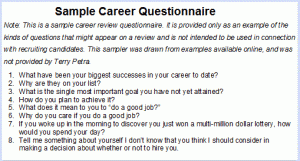Note: This is the seventh and final article in a series on decreasing turnover and increasing profits. In the previous articles Terry discussed turnover (High Turnover Is NOT Just Part of the Business), who to hire (What It Takes to Attract and Hire Recruiting Winners), setting expectations (Your Onboarding Should Not Be Like A Box of Chocolates), training standards (When You Set Standards and Manage to Them, Everyone Knows Where They Stand), performance based training (Performance Base Your Training For Early Success), and understanding motivation to better inspire and lead a team (Improve Commitment by Understanding the Personal Nature of Motivation).
_______________
In our series of seven articles, we have addressed the issues related to decreasing staff turnover and increasing profits. Since the series first appeared (it first began in our monthly print newsletter, The Fordyce Letter in Aug 2013), I have received hundreds of calls and emails from readers wanting to learn more about the principles and concepts presented in these articles. Based on these calls and at the request of many of you, I will attempt to summarize the key elements.
Know Your Management Style
One of our first articles discussed the importance of each manager defining their preferred operating/management style. Many times the cause of early turnover is the fact that the individual hired does not respond properly to the style of the manager. Therefore, one of the keys to eliminating turnover is to only hire people who will work well within your primary operating/management style. In order to do this, as managers, we must begin by identifying and understanding our style and the impact it has on the people we supervise. Only through this understanding can you hire the right people.
However, hiring the right people requires that you attract the right people. In our article “What It Takes to Attract and Hire Recruiting Winners” we identified the three key elements present in the hiring process that allow firms to attract and hire the right people. They are:
- The believability of the hiring manager – their personal ability to attract good people. This is an essential characteristic of an effective leader.
- The presentation of the employment opportunity. Based on this presentation, if the roles were reversed, would you go to work for you? You must be sold on what you are selling, believe in your opportunity.
- The firm’s strategic plan for the future. There is no such thing as a good job at a bad company. Therefore, you must demonstrate to the uncertain candidate that you have a solid plan for the future. Winners do not attach themselves to firms that lack direction and vision.
Do a Career Review
We discussed the use of a Career Review Questionnaire. Many of you who  called asked for, and received from me a copy of a boiler plate questionnaire that could serve as a starting point. These questionnaires need to be designed to probe into those areas not covered on a traditional application form; those areas that give you a view of the individual’s motivations, values, sense of purpose, decision-making ability, view of self, expectations, whether they are internalist or an externalist, and their work ethic.
called asked for, and received from me a copy of a boiler plate questionnaire that could serve as a starting point. These questionnaires need to be designed to probe into those areas not covered on a traditional application form; those areas that give you a view of the individual’s motivations, values, sense of purpose, decision-making ability, view of self, expectations, whether they are internalist or an externalist, and their work ethic.
Onboarding For Success
 In our article on onboarding (“Your Onboarding Should Not Be Like A Box of Chocolates”), we stated that if realistic expectations were not established between you and your new employee a state of mutual mystification would result and neither of you would have a clear understanding of what to expect from the other. Therefore, to eliminate this potential problem, you must ensure that prior to hiring, your new employee has realistic expectations regarding income potential, the training they will receive, the performance standards that apply to their position, your operating/management style and any pertinent developments that may influence their view of you, the opportunity or your company.
In our article on onboarding (“Your Onboarding Should Not Be Like A Box of Chocolates”), we stated that if realistic expectations were not established between you and your new employee a state of mutual mystification would result and neither of you would have a clear understanding of what to expect from the other. Therefore, to eliminate this potential problem, you must ensure that prior to hiring, your new employee has realistic expectations regarding income potential, the training they will receive, the performance standards that apply to their position, your operating/management style and any pertinent developments that may influence their view of you, the opportunity or your company.
Standards
Performance standards were discussed in our fourth article, “When You Set Standards and Manage to Them, Everyone Knows Where They Stand.” We stated that realistic performance standards provide both management and employers with a critically important measuring tool. They allow you to present a more accurate picture of the position during the hiring process and demonstrate to the candidate the requirements for remaining part of the team. They also allow the employee to monitor themself while bringing a level of objectivity to the management function which facilitates the decision making process. Above all, performance standards serve as a road map to success for your employees.
Training Builds Confidence
The importance of training, particularly performance based training, was covered in our next article “Performance Base Your Training For Early Success.” We discussed how, in many cases, it is not a lack of personal motivation, but rather a lack of confidence that determines the employee’s success. Without the benefits of on-going skills development, trainee confidence remains low; they become mechanical in their approach, results are inconsistent, and they receive little positive reinforcement for their efforts. Therefore, as a manager responsible for training, your greatest challenge is to help your trainees increase their confidence through a results-oriented, skills development training program that concentrates on building their competence on the job.
Many of you who called were interested in, and received more detailed information on how to establish this type of a program within your firm.
Knowing Motivation
Our final article in this series (“Improve Commitment by Understanding the Personal Nature of Motivation) focused on the subject of understanding the nature of personal motivation as a primary by-product of personal commitment. The commitment that serves as a basis for personal motivation stems from one or more of the following sources:
- Want or desire;
- Fear of failure;
- Self-validation.
Most consistently successful performers in our industry receive their motivation from a combination of all three of these sources. However, fear of failure and self-validation are the most prevalent.
As a manager, it is imperative that you identify the strength and the source of a prospective employee’s true motivation. The questionnaire approach, when properly utilized, serves as an excellent tool for accomplishing this, thereby allowing you to adjust your training and management approach to properly support and interface with your new employees.
Outlined in this series of articles were many of the keys required to hire, train and, very importantly, retain your most valuable asset — your producing employees. Nothing contributes more to the long-term profitability of your firm than a staff of carefully selected, properly trained, highly motivated individuals who share with you a realistic sense of the present and a clear vision for the future.
As always, if you have questions or comments about any of the articles in this series or wish to receive my input on any other topic related to this business, just let me know. Your calls and e-mails are most welcome.
